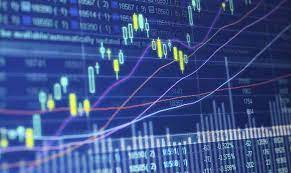
CFD Trading is a popular way of trading that allows traders to speculate on the price movements of global financial markets. It is an effective way of making money in the financial markets without actually owning the underlying asset. Many traders consider cfd trading as an attractive and lucrative option. However, it is not without risks. In this comprehensive guide, we aim to demystify CFD trading and provide you with the necessary information to become a successful trader.
What is CFD Trading?
CFD stands for Contract for Difference. CFD trading allows you to speculate on the price movements of financial markets without actually owning the underlying asset. It is a versatile trading instrument that allows you to trade a wide range of assets, including forex, stocks, commodities, and indices. CFDs are leveraged products, which means you only need to put down a small percentage of the value of the underlying asset to open a position.
One of the significant advantages of CFD trading is that you can go long or short on an asset. Going long means you are buying an asset with the expectation that its value will increase, and you can sell the asset at a higher price for a profit. Going short means you are selling an asset with the expectation that its value will decrease, and you can buy the asset at a lower price for a profit.
How to Trade CFDs?
To trade CFDs, you need to open a trading account with a reputable broker. Once your account is set up, you can deposit funds and start trading. The broker will offer you a range of trading platforms to choose from. These platforms come with a range of tools and features to help you make informed trading decisions. You can use technical analysis tools, news feeds, economic calendars, and social trading to enhance your trading experience.
When you trade CFDs, you need to be mindful of the spread and the overnight financing costs. The spread is the difference between the buying and selling price of an asset. It is the broker’s commission for facilitating the trade. Overnight financing costs apply to leveraged positions that are kept open overnight. These costs vary depending on the broker and the asset being traded.
Risk Management in CFD Trading
CFD trading is a high-risk activity and requires a sound risk management strategy. Some of the key risk management tools you can use when trading CFDs include stop-loss orders, guaranteed stop-loss orders, and take-profit orders. A stop-loss order is an order to sell an asset if it reaches a predetermined price level. A guaranteed stop-loss order is a type of stop-loss order that guarantees to close your position at a particular price level, regardless of market volatility.
Take-profit orders are another risk management tool that you can use to secure profits. A take-profit order is an instruction to close a position at a particular price level when the market moves in your favor. It helps to lock in profits and reduce the risk of losing gains.
CFD Trading Strategies
There are numerous CFD trading strategies you can use to make profitable trades in the financial markets. Some of the popular trading strategies include scalping, day trading, and swing trading.
Scalping is a strategy that involves making multiple trades in a short period of time to capture small profits from market movements. Day trading is a strategy that involves opening and closing trades within the same trading day. Swing trading is a strategy that involves holding positions for a more extended period of time (days to weeks) to capture larger market movements.
Final Thoughts
In conclusion, CFD trading is an attractive and lucrative option for traders looking to make money in the financial markets. However, it is essential to understand the risks involved and use sound risk management strategies to reduce the impact of those risks. It is also important to have a trading strategy that suits your risk appetite and trading style. With the right tools, knowledge, and mindset, you can become a successful CFD trader.